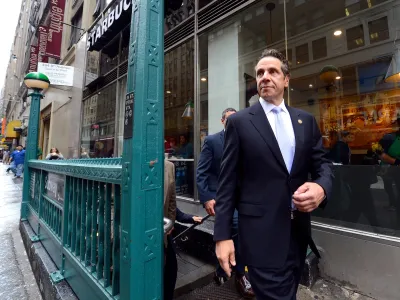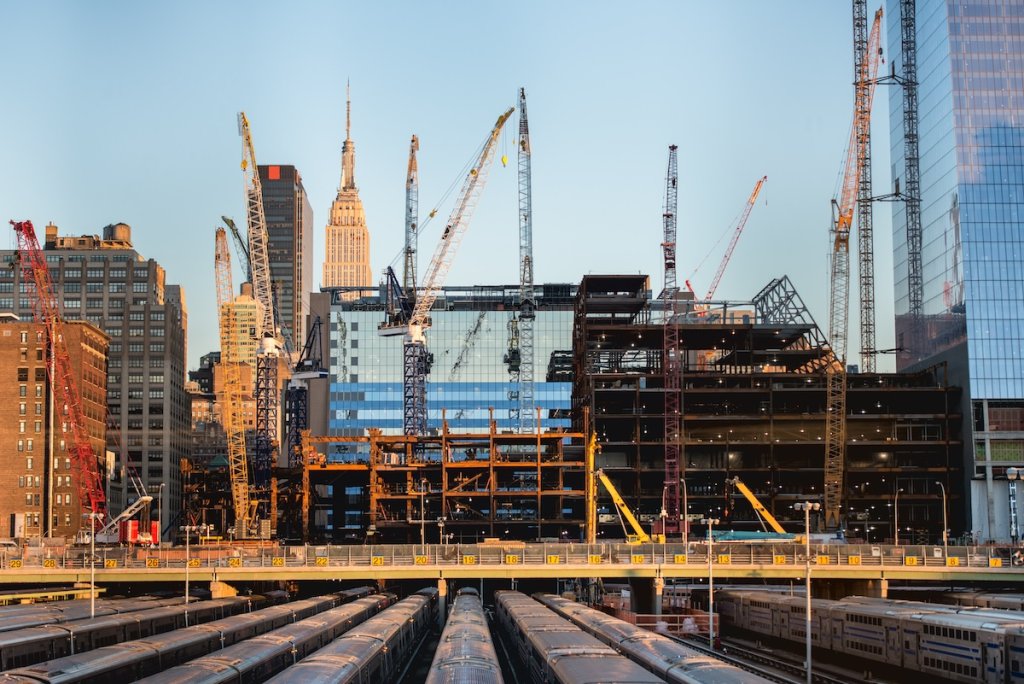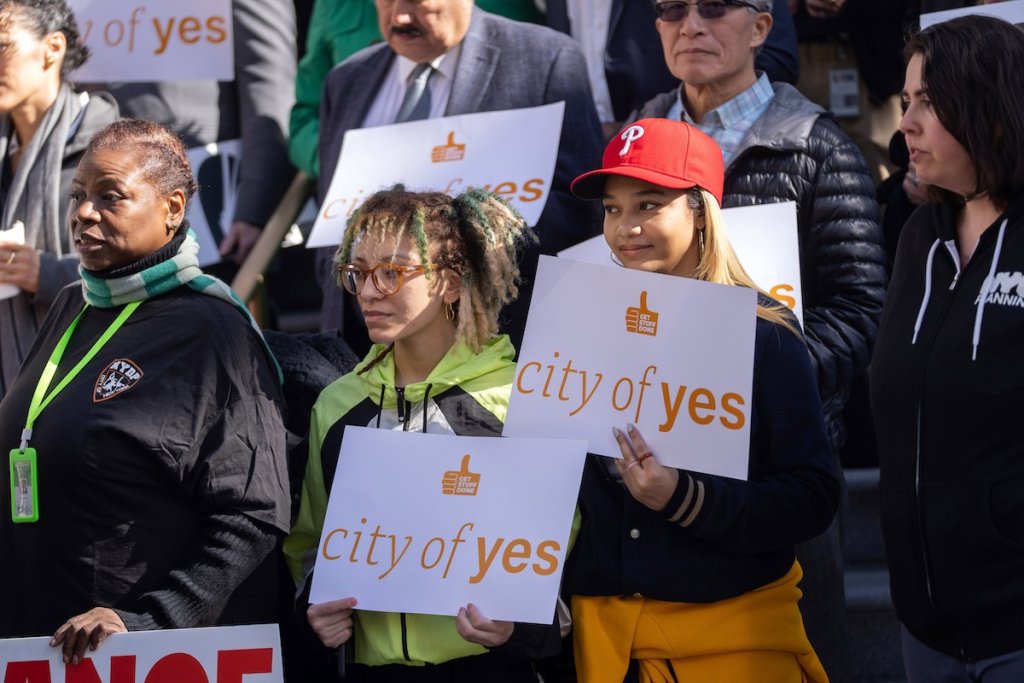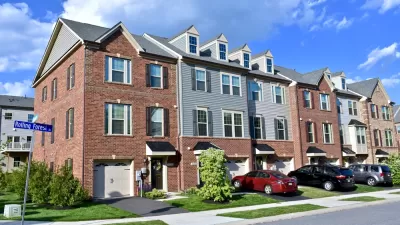In the New York City mayoral race, odd bedfellows align to preserve the housing status quo.

This piece was originally published on The Urban Condition.
In big city politics, housing does not fit neatly along existing ideological lines.
This dynamic has been particularly vivid in the New York City mayoral race, culminating in tomorrow’s primary election.
I wrote about the housing policies of the mayoral candidates in a recent CityLab piece. In it, I noted how much progressives have recently shifted in a pro-housing development direction. It’s a sign of the growing influence of the YIMBY (or, perhaps now, “abundance”) movement, as well as the sheer depths of the city’s housing crisis. Empirically-minded progressives can no longer deny that New York has a housing shortage, in addition to plenty of other structural problems with its housing ecosystem.
Those further to the right on the political spectrum, by contrast, have embraced the NIMBY mantle — “property rights” be damned. The perennial Republican candidate, Curtis Sliwa, has made his opposition to the recently passed City of Yes upzoning a central part of his campaign.
Former Governor Andrew Cuomo, who’s taking the centrist/moderate lane in the Democratic field, has also genuflected in this direction. Though he, like his Democratic rivals, talks in broad strokes about ushering in a homebuilding boom, he has distinguished himself by saying he wants to protect low-density neighborhoods from new development. That’s a powerful message for outer borough voters in single-family neighborhoods where the relatively modest City of Yes was perceived as a major threat.
Even as he provides comfort to this constituency, Cuomo has simultaneously racked up huge donations from some of the city’s biggest real estate developers and construction unions. Clearly, these pro-development groups also feel like Cuomo will serve their interests.

Somehow, Cuomo has managed to become the preferred candidate of traditional NIMBY homeowners, big developers, and the building trades. Perhaps this ability to bring together seemingly opposed groups is a sign of smart political maneuvering and a winning coalition. (Cuomo has long been the frontrunner in the primary, though the electric young socialist assemblymember Zohran Mamdani is catching up fast, and Comptroller Brad Lander’s recent arrest by ICE agents could further shake up the race.)
But I think Cuomo’s odd bedfellows coalition is less of a political achievement and more of a reflection of the housing politics status quo. The housing future implied by Cuomo’s policies looks much like the present, with perhaps a bit more construction in the same handful of hotspots where development has been concentrated in recent decades. This housing future serves all three aforementioned constituencies well.
Sophisticated mega-developers, with their teams of lawyers and lobbyists, are well equipped to navigate the administrative and political hurdles of building under existing policies. These well-capitalized firms make their money from building a small number of billion dollar skyscrapers (mostly residential these days, but sometimes commercial) in traditional high-rise districts like Midtown and Downtown Brooklyn as well as post-industrial areas like Long Island City and the Williamsburg Waterfront. These high-value projects require legions of skilled workers over a long period of time, which often translates to project labor agreements with unions.

As high-rise construction booms in parts of the urban core, Cuomo promises that the rest of the city — the vast majority of its land area — will be left more or less as it is. For many of the people who live in those neighborhoods, or at least the older homeowners who are most likely to vote, that sounds like a good deal.
Even though housing is widely seen as one of the most important issues in the race, it would be wrong to suggest that Cuomo’s housing policies are the sole or even main reason that these constituencies are backing him. Voters are weighing many other issues and ideologies and personality traits. It’s nonetheless illuminating to see how housing politics and policy overlap.
Cuomo’s coalition looks like a product of the grand urban development bargain that has been in place since Michael Bloomberg was mayor. Bloomberg made possible the tower clusters tracing the East River, in Hudson Yards, and along 125th Street in Harlem. In exchange, his administration downzoned many peripheral neighborhoods — which happened to be disproportionately wealthier and whiter — including parts of Brownstone Brooklyn and Staten Island. Incidentally, Bloomberg is Cuomo’s largest single donor, giving $8.3 million to an allied SuperPAC.

The Bloomberg growth machine, which Bill de Blasio and Eric Adams tinkered with but largely kept in place during their terms, is better than no growth machine. The city’s housing crisis would be worse without it. But as rents continue to rise and vacancy rates decline, homelessness grows and housing costs eat up ever greater chunks of households’ income, it clearly has not been sufficient to meet housing demand. The theory that allowing big buildings in a few neighborhoods can provide enough housing for everyone in the city or even region has proven incorrect.
Most every other major city in the U.S. has made a similar bargain over the past two decades, with a few notable exceptions. New development has been allowed in post-industrial, often majority-minority neighborhoods in and around downtown. These policies have produced some very large, very visible new buildings, conveying the impression that the city is in the midst of a development boom. Only recently have politicians begun to acknowledge that looks can be deceiving.
The housing policy conversation, in New York and nationwide, is moving into a new phase. City of Yes represented an initial, modest attempt to open up more of the city to new development by adding “a little more housing in every neighborhood,” as Adams is fond of saying. Housing policy experts, and, increasingly, political leaders, recognize that was a baby step. Cuomo’s leading rivals in the Democratic primary have all said they want to expand upon City of Yes and spread housing production more evenly across the city.

However, as I wrote in my CityLab piece, only one candidate, state Senator Zellnor Myrie, has laid out in detail what this would look like and shown that he’s ready for the hard fights that his plan would entail. That means going to bat for big, mixed-income projects on NYCHA land and other public sites; rezoning more industrial areas throughout Brooklyn and Queens for housing; and, most importantly, allowing a lot more small apartment buildings in every neighborhood.
In other cities, housing policy is beginning to move in this direction, as well. In San Francisco, the rezoning plan expected to be passed later this year will allow apartment buildings to rise in parts of the city that haven’t seen new construction in decades. In Portland, Oregon, a boom in small-scale “missing middle” housing in single-family neighborhoods has helped bring down prices. Same story in Minneapolis, where citywide zoning reform led to lots of small apartment buildings and flatlining rents.
This is the state of the art, the best practice in contemporary urban planning. Whether it is the best politics remains to be seen.

Planetizen Federal Action Tracker
A weekly monitor of how Trump’s orders and actions are impacting planners and planning in America.

Vehicle-related Deaths Drop 29% in Richmond, VA
The seventh year of the city's Vision Zero strategy also cut the number of people killed in alcohol-related crashes by half.

Can We Please Give Communities the Design They Deserve?
Often an afterthought, graphic design impacts everything from how we navigate a city to how we feel about it. One designer argues: the people deserve better.

Austin Tests Self-Driving Bus
Autonomous buses could improve bus yard operations for electric fleets, according to CapMetro.

Missouri Tenants Sue Housing Owners Over Tax Credit Program
In Springfield, Missouri, organized tenants have filed a lawsuit against the past and present owners of their tax credit–financed properties, claiming that in exercising an opt-out provision they violated both state and federal requirements.

Judge Halts Trump Order Tying State Transportation Grants to Immigration Actions
Ruling applies to Colorado, which was among 20 plaintiff states.
Urban Design for Planners 1: Software Tools
This six-course series explores essential urban design concepts using open source software and equips planners with the tools they need to participate fully in the urban design process.
Planning for Universal Design
Learn the tools for implementing Universal Design in planning regulations.
Borough of Carlisle
Smith Gee Studio
City of Camden Redevelopment Agency
City of Astoria
Transportation Research & Education Center (TREC) at Portland State University
City of Camden Redevelopment Agency
Municipality of Princeton (NJ)




























